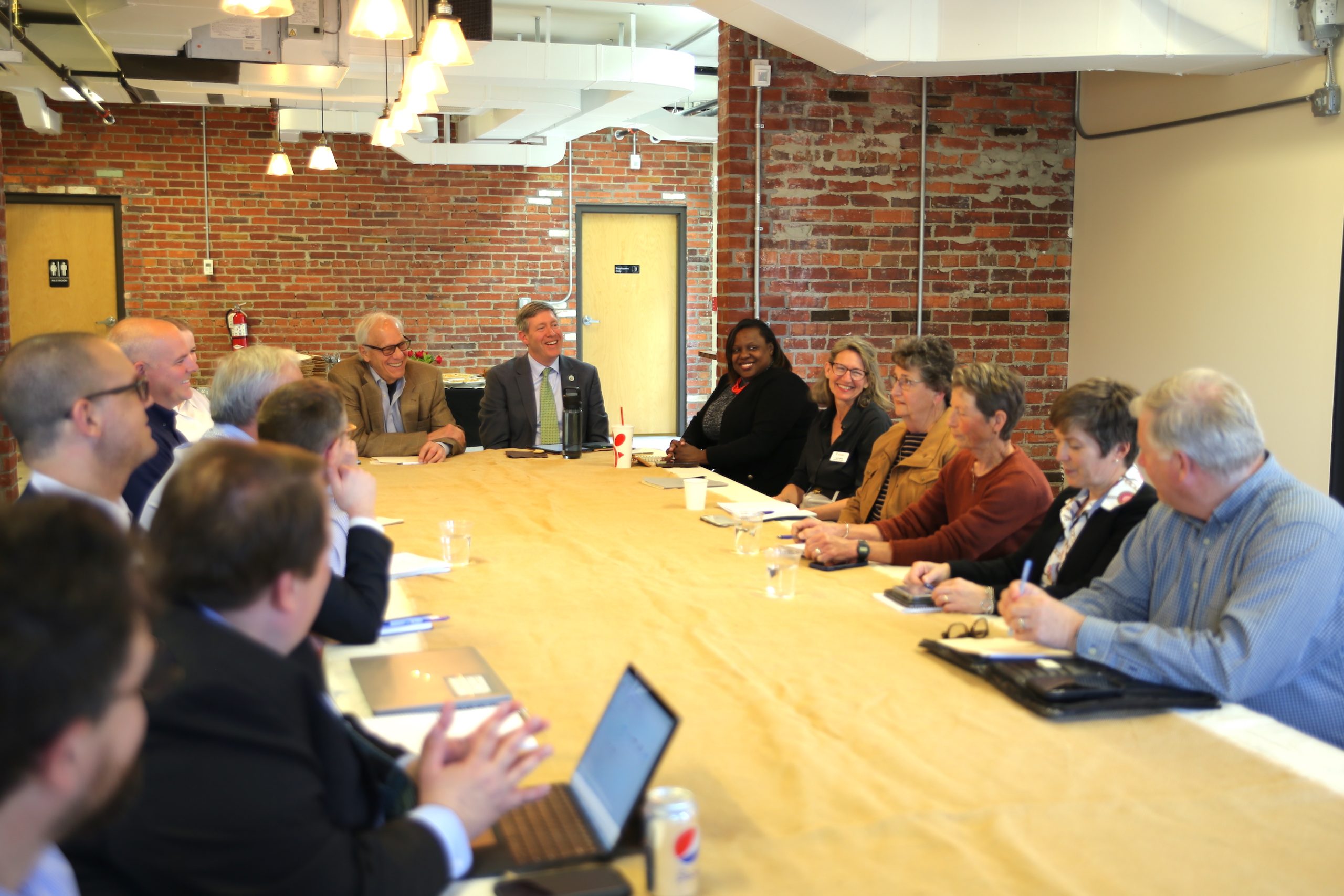ESLC Hosts State Officials and Local Farmers to Discuss Utility-Scale Solar

Last week, Paul Pinsky, Director of the Maryland Energy Administration, Secretary Kevin Atticks of the Maryland Department of Agriculture, and Madison Bryce from Governor Wes Moore’s office sat down with several Eastern Shore farmers at a meeting organized by Eastern Shore Land Conservancy for a frank discussion about the loss of some of Maryland’s best farmland to large, utility-scale solar fields.
The invited group of eight farmers represented more than 12,000 acres of grain, livestock, dairy, poultry and vegetable operations across the upper and middle Eastern Shore. While most farmers at the meeting were supportive of accelerating solar development–several of those present already incorporate solar power into their operations–they unanimously expressed alarm about the long-term impacts of siting utility-scale solar on huge swaths of Maryland farmland.
The Eastern Shore’s large parcels of flat land are attractive to solar developers, as they utilize economies of scale and because land prices here are considerably lower than comparable locations throughout Maryland. Recent court decisions and legislative action have served to uphold the state of Maryland’s ability to preempt local zoning decisions when it comes to solar siting, leaving counties with little say over how – and how much—development occurs in their regions.
Maryland’s current legislated renewable energy goal is to generate 100% clean energy by 2035, which will require significant additional acreage devoted to solar development. Many of the farmers present advocated for finding a way to more equitably distribute the responsibility for renewable energy siting throughout the state, rather than the Eastern Shore bearing more than its share. Indeed, when Pinsky was a state senator, he introduced legislation to create a state commission charged with developing a master map to facilitate solar siting in the state while protecting forests and agricultural land. It failed to pass. Now as head of the Energy Administration, he announced they are working on a major initiative to install solar on parking lots and soon will release a new study on utilizing brownfield sites for renewable energy production.
Secretary Atticks expressed his support for these approaches: “Agriculture is the highest and best use for prime farmland. What’s the highest and best use for a parking lot? Parking. When you add solar to the parking lot, have you taken away parking? When you add solar to a rooftop have you taken away the rooftop? If you add solar to a median, have you taken away the median? … And that is the concern here. Once agriculture is gone, it’s gone.” This sentiment was shared by all the farmers in the room who project the importance of responsible solar siting will only escalate in the future.
Several farmers worried that Maryland might begin amending state-held easements and increasing allowances for solar, potentially supplying developers with even more acreage. Taking agriculture out of production for such industrial development could not only dramatically alter the beautiful landscape of the Eastern Shore, it could also seriously hamper food production and destroy what progress we’ve made in environmental mitigation programs started by the USDA and MDA. Developers claim land can go back into agricultural production at the end of a 25-year lease, but they are not accounting for serious topsoil disruption, road building, transmission infrastructure, tons of poured concrete, and a host of environmental impacts that have yet to be thoroughly studied.
The impacts of climate change on agricultural production around the globe, combined with projections for population growth, elevate the importance of safeguarding Maryland’s farmland. The Delmarva peninsula not only has an inordinate amount of prime farm soils. Its proximity to major metropolitan markets where millions of people live has made agriculture a main contributor to Maryland’s economy. How much productive farmland can be diverted to other uses without jeopardizing either the agricultural economy or our ability to a build a resilient food system? An abundance of utility-scale solar on farmland will have long-term implications and that requires a long-term strategy.






